Filter by
You must be a CTBUH Member to view this resource.

Shanghai Tower
Shanghai Center
Building
Completed
2015
Hotel / Office
Concrete-Steel Composite
LEED Platinum BD+C: Core and Shell
632 m / 2,073 ft
128
5
258
1794
106
20.5 m/s
420,000 m² / 4,520,842 ft²
You must be a CTBUH Member to view this resource.
You must be a CTBUH Member to view this resource.
Proposed
Construction Start
Completed
Usually involved in the front end design, with a "typical" condition being that of a leadership role through either Schematic Design or Design Development, and then a monitoring role through the CD and CA phases.
Usually takes on the balance of the architectural effort not executed by the "Design Architect," typically responsible for the construction documents, conforming to local codes, etc. May often be referred to as "Executive," "Associate," or "Local" Architect, however, for consistency CTBUH uses the term "Architect of Record" exclusively.
The Design Engineer is usually involved in the front end design, typically taking the leadership role in the Schematic Design and Design Development, and then a monitoring role through the CD and CA phases.
The Engineer of Record takes the balance of the engineering effort not executed by the “Design Engineer,” typically responsible for construction documents, conforming to local codes, etc.
The Peer Review Engineer traditionally comments on the information produced by another party, and to render second opinions, but not to initiate what the design looks like from the start.
The Design Engineer is usually involved in the front end design, typically taking the leadership role in the Schematic Design and Design Development, and then a monitoring role through the CD and CA phases.
The Engineer of Record takes the balance of the engineering effort not executed by the “Design Engineer,” typically responsible for construction documents, conforming to local codes, etc.
The Peer Review Engineer traditionally comments on the information produced by another party, and to render second opinions, but not to initiate what the design looks like from the start.
Other Consultant refers to other organizations which provided significant consultation services for a building project (e.g. wind consultants, environmental consultants, fire and life safety consultants, etc).
These are firms that consult on the design of a building's façade. May often be referred to as "Cladding," "Envelope," "Exterior Wall," or "Curtain Wall" Consultant, however, for consistency CTBUH uses the term "Façade Consultant" exclusively.
Material Supplier refers to organizations which supplied significant systems/materials for a building project (e.g. elevator suppliers, facade suppliers, etc).
You must be a CTBUH Member to view this resource.
Usually involved in the front end design, with a "typical" condition being that of a leadership role through either Schematic Design or Design Development, and then a monitoring role through the CD and CA phases.
Usually takes on the balance of the architectural effort not executed by the "Design Architect," typically responsible for the construction documents, conforming to local codes, etc. May often be referred to as "Executive," "Associate," or "Local" Architect, however, for consistency CTBUH uses the term "Architect of Record" exclusively.
The Design Engineer is usually involved in the front end design, typically taking the leadership role in the Schematic Design and Design Development, and then a monitoring role through the CD and CA phases.
The Engineer of Record takes the balance of the engineering effort not executed by the “Design Engineer,” typically responsible for construction documents, conforming to local codes, etc.
The Peer Review Engineer traditionally comments on the information produced by another party, and to render second opinions, but not to initiate what the design looks like from the start.
The Design Engineer is usually involved in the front end design, typically taking the leadership role in the Schematic Design and Design Development, and then a monitoring role through the CD and CA phases.
The Engineer of Record takes the balance of the engineering effort not executed by the “Design Engineer,” typically responsible for construction documents, conforming to local codes, etc.
The Peer Review Engineer traditionally comments on the information produced by another party, and to render second opinions, but not to initiate what the design looks like from the start.
The CTBUH lists a project manager when a specific firm has been commissioned to oversee this aspect of a tall building’s design/construction. When the project management efforts are handled by the developer, main contract, or architect, this field will be omitted.
The main contractor is the supervisory contractor of all construction work on a project, management of sub-contractors and vendors, etc. May be referred to as "Construction Manager," however, for consistency CTBUH uses the term "Main Contractor" exclusively.
Other Consultant refers to other organizations which provided significant consultation services for a building project (e.g. wind consultants, environmental consultants, fire and life safety consultants, etc).
These are firms that consult on the design of a building's façade. May often be referred to as "Cladding," "Envelope," "Exterior Wall," or "Curtain Wall" Consultant, however, for consistency CTBUH uses the term "Façade Consultant" exclusively.
Material Supplier refers to organizations which supplied significant systems/materials for a building project (e.g. elevator suppliers, facade suppliers, etc).
2016 CTBUH Awards
2016 CTBUH Awards
2016 CTBUH Awards
14 June 2023 - CTBUH News
25 November 2018 - Event

03 November 2016 | Shanghai
As the tallest building in China upon completion, Shanghai Tower has had an immediate and profound impact on the country’s perceptions of how a skyscraper...
22 August 2022
Tarek Hassan, Yehia El-Ezaby & Charles Malek, rector Dar Al Handasah Consultants (Shair and Partners)
This paper presents an overview of a process of optimizing concrete mixture for tall buildings, culminating in the design of the Iconic Tower, the key...

10 July 2020
Videos surfaced on Monday 6 July, 2020 after tenants from the 9th to the 60th floors of Shanghai Tower, the tallest building in China, found...
As the third tower in the trio of signature skyscrapers at the heart of Shanghai’s new Lujiazui Finance and Trade Zone, Shanghai Tower embodies a new prototype for tall buildings. Placed in close proximity to Jin Mao Tower and Shanghai World Financial Center, the new tower rises high above the skyline, its curved façade and spiraling form symbolizing the dynamic emergence of modern China. But its twisting form goes beyond just creating a unique appearance; wind tunnel tests confirm a 24 percent savings in structural wind loading when compared to a rectangular building of the same height.
More than a landmark, the mixed-use tower offers a sustainable way of living in a vertical city, with a unique mix of restaurants, shops, offices, and hotels spaced throughout the building. The tower’s program is organized into nine vertical zones. Each of these vertical neighborhoods rise from a sky lobby, a light-filled garden atrium that creates a sense of community and supports daily life with a varied program catering to tenants and visitors. The sky lobbies function much like traditional town plazas and squares, bringing people together throughout the day. These civic spaces recall the city’s historic open courtyards, which merge interiors with exteriors in a landscaped setting.
Shanghai Tower is one of the most sustainably advanced tall buildings in the world. A central aspect of its design is the transparent second skin that wraps around the entire building. The ventilated atriums it encloses conserve energy by modulating the temperature within the void. The space acts as a buffer between the inside and outside, warming up the cool outside air in the winter and dissipating heat from the interior in the summer. The tower also notably employs a tri-cogeneration system, a grey water/rainwater system, and several renewable energy sources.
2016 CTBUH Awards
2016 CTBUH Awards
2016 CTBUH Awards

03 November 2016 | Shanghai
As the tallest building in China upon completion, Shanghai Tower has had an immediate and profound impact on the country’s perceptions of how a skyscraper...

03 November 2016 | Shanghai
Jianping Gu, General Manager, Shanghai Tower C&D, & Grant Uhlir, Managing Director, Gensler, are interviewed by Chris Bentley regarding Shanghai Tower, Shanghai, the 2016 CTBUH...

18 October 2016 | Shanghai
Andrew Nicholson of CBRE is interviewed by Chris Bentley during the 2016 CTBUH China Conference. Andrew discusses the building management of the Shanghai Tower.

17 October 2016 | Shanghai
Claude Bojer Godefroy of Henning Larsen Architects is interviewed by Chris Bentley during the 2016 CTBUH China Conference. Claude discusses the design process for interior...

17 October 2016 | Shanghai
Jianping Gu of Shanghai Tower Construction & Development is interviewed by Chris Bentley during the 2016 CTBUH China Conference. Jianping discusses the economics of constructing...

17 October 2016 | Shanghai
Monday October 17, 2016. Shenzhen, China. Dennis Poon of Thornton Tomasetti, presents at the 2016 China Conference Session 4c: Structural & Geotechnic Engineering. As the...

17 October 2016 | Shanghai
Monday October 17, 2016. Shenzhen, China. Samuel So, JLL, presents at the 2016 China Conference Session 3c: Building Operation. China is the global epicenter of...

17 October 2016 | Shanghai
Monday, October 17, 2016. Shenzhen, China. A panel discussing the challenges of growing urban populations throughout the globe.

18 September 2014 | Shanghai
2014 Shanghai International Conference Shanghai Tower Room, S4 Questions & Answers session with speakers Duanxue Shi, Shanghai Construction Group Co., Ltd., Zhijun He, Tongji Architectural...

18 September 2014 | Shanghai
The Shanghai Tower features performance monitoring systems that help dynamically observe risks, quality levels, and structural states under extreme weather conditions – both during construction...
22 August 2022
Tarek Hassan, Yehia El-Ezaby & Charles Malek, rector Dar Al Handasah Consultants (Shair and Partners)
This paper presents an overview of a process of optimizing concrete mixture for tall buildings, culminating in the design of the Iconic Tower, the key...

20 March 2020
CTBUH Research
This research paper undertakes a review of the 2012 report by the Council on Tall Buildings and Urban Habitat, “Tallest 20 in 2020: Entering the...

31 January 2019
CTBUH Research
In 2018, 143 buildings of 200 meters’ height or greater were completed. This is a slight decrease from 2017’s record-breaking total of 147, and it...
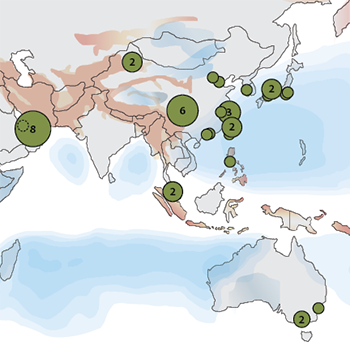
30 July 2018
CTBUH Research
As tall buildings continue to be built in seismically-active and cyclone-prone areas, the need to augment the structures of these buildings with dynamic modification devices...
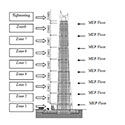
01 March 2017
Xin Zhao, Tongji University; Shehong Liu, Tongji Architectural Design (Group) Co., Ltd.
Due to the time-dependent properties of materials, structures, and loads, accurate time-dependent effects analysis and precise construction controls are very significant for rational analysis and...
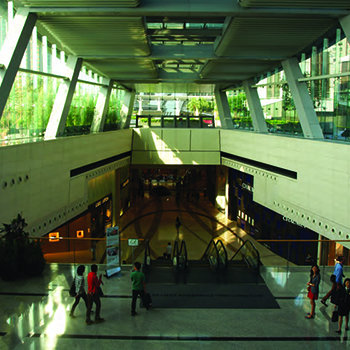
17 October 2016
Swinal Samant, National University of Singapore
The rise in sustainable skyscrapers and large-scale mixed-use buildings has seen the proliferation of atria and sky-courts worldwide due to their ability to simultaneously contribute...
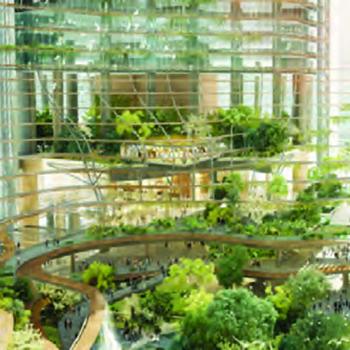
17 October 2016
Samuel So, Colin Dowall & Michael George, JLL
China is the global epicenter of mankind’s mass urbanization and the exploding growth of global cities. China is the unrivaled leader in the development of...
Ermell_ccbysa.jpg)
19 January 2016
Jason Gabel, Marty Carver & Marshall Gerometta, CTBUH
CTBUH has determined that 106 buildings of 200 meters’ height or greater were completed around the world in 2015 – setting a new record for...

01 December 2015
Jian Gong & Xiaoping Wu, Shanghai Construction Group; Weijiu Cui & Yong Yuan, Tongji University
Crack control remains a primary concern for mass concrete structures, where the majority of cracking is caused by temperature changes during the hydration process. One-time...
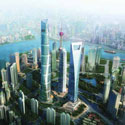
26 October 2015
Robert Goodwin, Perkins + Will
Should a tower in Moscow look like one in Dubai? Once one entered a city and marveled at the unique magic of its architecture –...
14 June 2023
In early June 2023, CTBUH President Dr. Antony Wood and CTBUH Asia Regional Director Dr. Peng Du traveled to China and spoke at events in four cities: Hong Kong, Shenzhen, Wuxi, and Shanghai. At each event, the CTBUH mission and upcoming CTBUH conferences in Asia were introduced, and Wood gave a presentation on "10 Principles for a New High Rise Architecture."
25 November 2018
CTBUH China participated in the Shanghai Tower International Vertical Marathon, climbing to the 119th floor of the building.
22 August 2018
CTBUH has released a Tall Buildings in Numbers (TBIN) interactive data study on the world's tallest buildings with dampers.
12 September 2017
CTBUH partnered with Guinness World Records to identify the commercial building with the fastest elevator speeds and longest vertical runs.
28 August 2017
Officials of Shanghai Tower opened the building's highly-anticipated Summit 632 space, making it the second-highest occupiable space in the world after the Burj Khalifa, Dubai.
5 July 2017
CTBUH Singapore, in coordination with CTBUH Malaysia and CTBUH Thailand, hosted a multi-city seminar on sustainable design in Singapore, Kuala Lumpur, and Bangkok.
24 May 2017
CTBUH, ComEd, and Seventhwave partnered to host a breakfast seminar focused on high-performance building envelope design with the goal of identifying opportunities for energy savings.
17 January 2017
The CTBUH China Office hosted a visit from SuperTEC, a consortium of researchers and practitioners from Korea University and Dankook University in Seoul.
19 December 2016
Check out the Council on Tall Buildings and Urban Habitat's top stories of 2016 for each month and take a look ahead with the Council’s monthly predictions for 2017.
4 November 2016
The CTBUH Awards Jury named Shanghai Tower, Shanghai as the “2016 Best Tall Building Worldwide” at the 15th Annual CTBUH Awards Ceremony and Dinner.
Subscribe below to receive periodic updates from CTBUH on the latest Tall Building and Urban news and CTBUH initiatives, including our monthly newsletter. Fields with a red asterisk (*) next to them are required.
View our privacy policy